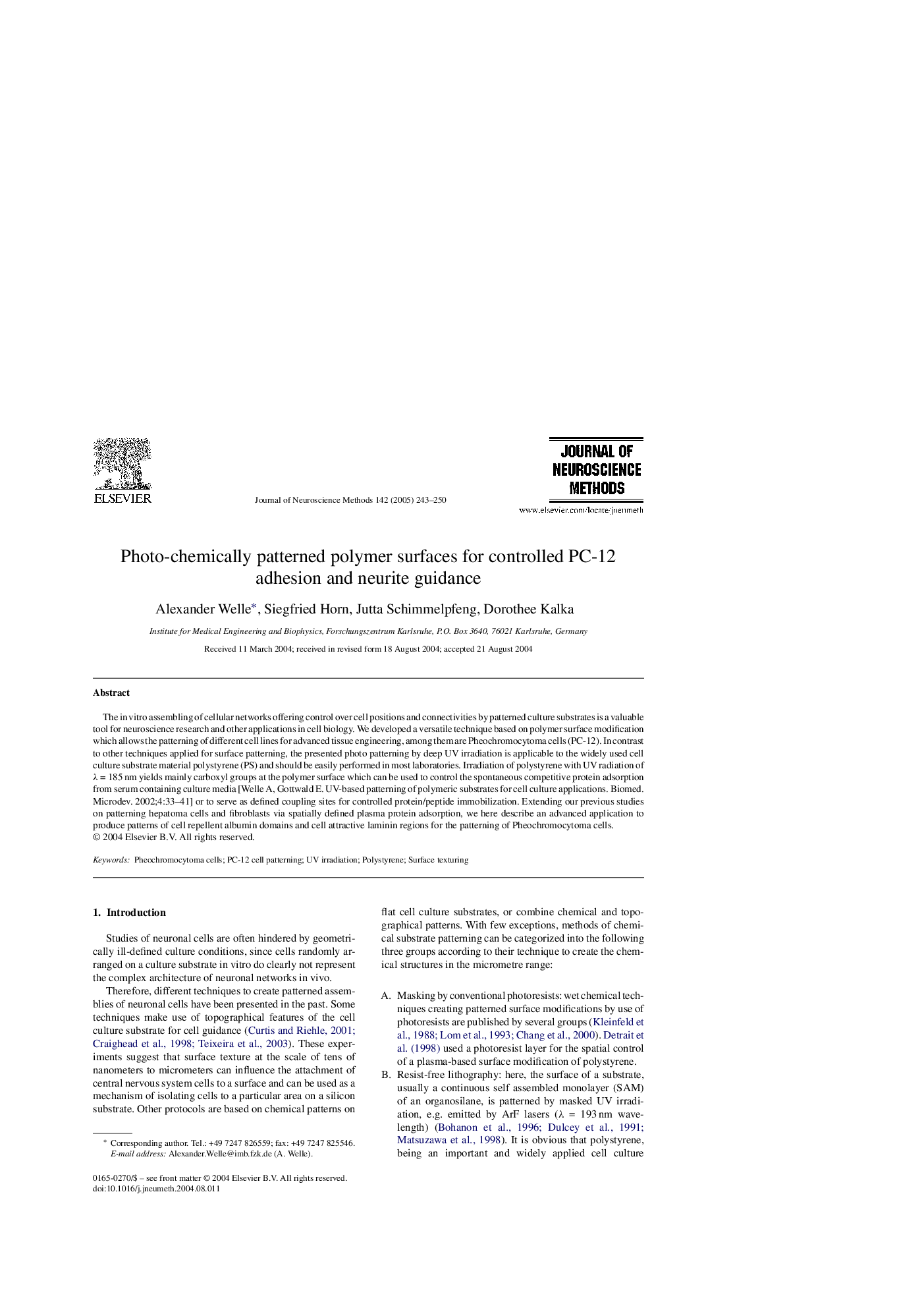| Article ID | Journal | Published Year | Pages | File Type |
|---|---|---|---|---|
| 9424344 | Journal of Neuroscience Methods | 2005 | 8 Pages |
Abstract
The in vitro assembling of cellular networks offering control over cell positions and connectivities by patterned culture substrates is a valuable tool for neuroscience research and other applications in cell biology. We developed a versatile technique based on polymer surface modification which allows the patterning of different cell lines for advanced tissue engineering, among them are Pheochromocytoma cells (PC-12). In contrast to other techniques applied for surface patterning, the presented photo patterning by deep UV irradiation is applicable to the widely used cell culture substrate material polystyrene (PS) and should be easily performed in most laboratories. Irradiation of polystyrene with UV radiation of λ = 185 nm yields mainly carboxyl groups at the polymer surface which can be used to control the spontaneous competitive protein adsorption from serum containing culture media [Welle A, Gottwald E. UV-based patterning of polymeric substrates for cell culture applications. Biomed. Microdev. 2002;4:33-41] or to serve as defined coupling sites for controlled protein/peptide immobilization. Extending our previous studies on patterning hepatoma cells and fibroblasts via spatially defined plasma protein adsorption, we here describe an advanced application to produce patterns of cell repellent albumin domains and cell attractive laminin regions for the patterning of Pheochromocytoma cells.
Related Topics
Life Sciences
Neuroscience
Neuroscience (General)
Authors
Alexander Welle, Siegfried Horn, Jutta Schimmelpfeng, Dorothee Kalka,
